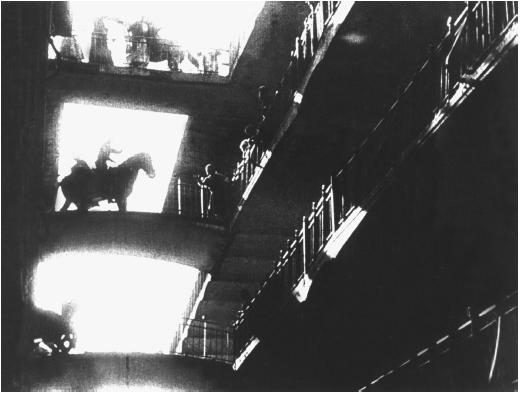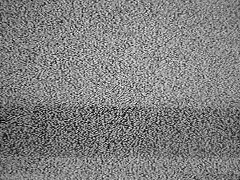 Strike (Russian: Стачка, translit. Stachka) is a silent film made in the Soviet Union by Sergei Eisenstein. It was Eisenstein's first full-length feature film, and he would go on to make The Battleship Potemkin later that year. It was acted by the Proletcult Theatre, and composed of six parts. It was in turn, intended to be one part of a seven-part series, entitled Towards Dictatorship (of the proletariat), that was left unfinished. Eisenstein's influential essay, Montage of Attractions was written between Strike's production and premiere.
Strike (Russian: Стачка, translit. Stachka) is a silent film made in the Soviet Union by Sergei Eisenstein. It was Eisenstein's first full-length feature film, and he would go on to make The Battleship Potemkin later that year. It was acted by the Proletcult Theatre, and composed of six parts. It was in turn, intended to be one part of a seven-part series, entitled Towards Dictatorship (of the proletariat), that was left unfinished. Eisenstein's influential essay, Montage of Attractions was written between Strike's production and premiere.The film depicts a strike by the workers of a factory in pre-revolutionary Russia, and their subsequent suppression. The film is most famous for a sequence near the end in which the violent putting down of the strike is cross-cut with footage of cattle being slaughtered, although there are several other points in the movie where animals are used as metaphors for the conditions of various individuals. Another theme in the film is collectivism in opposition to individualism which was viewed as a convention of western film. Collective efforts and collectivization of characters were central to both Strike and Battleship Potemkin. Eisenstein's first film tells the story of a fictional labor strike in pre-Soviet Russia. The suicide of a worker leads to a mass walkout. The bosses and political authorities employ spies and a gang of street thugs to sabotage the strike. When that fails, they bring in armed Cossacks to crush the rebellion by force.
The film shows the young director already in command of the elements of montage to an astonishing degree. The sense of precision, the instinct for combining editing rhythm with drama and the movements of people, practically assault the viewer with the force of a revelation. Along with this power over the image comes a vaguely oppressive feeling - everything we see is so exactly determined by the director's vision that the viewer's eye and mind can feel hampered - a common characteristic of Eisenstein's early masterpieces.
The weak points of Strike are the acting (most of the performers show evidence of their stage backgrounds by being overly theatrical in their gestures) and the propagandistic caricatures of the capitalist bosses. Eisenstein stacks the deck by depicting the bosses as overweight, cigar-puffing villains wearing top hats. That was a stereotype even then. Now it tends to puncture the film's seriousness.
Strike ends with two amazing set pieces. The first shows the fire brigade turning its hoses on the protesting workers. Never have I seen anything so realistic. Those people are really getting blasted by the water, and the dynamic cutting and sense of detail create a riveting immediacy which is a model for any sequence of its kind. The second set piece is the invasion by the mounted Cossacks on the workers' tenement housing. A sort of precursor to the Odessa Steps scene in Potemkin, this long and blisteringly violent tour de force is almost as great and certainly as horrifying as that celebrated sequence.
Download links: 1 2 3 4 or 1 2 3 4 5 6 7













No comments:
Post a Comment